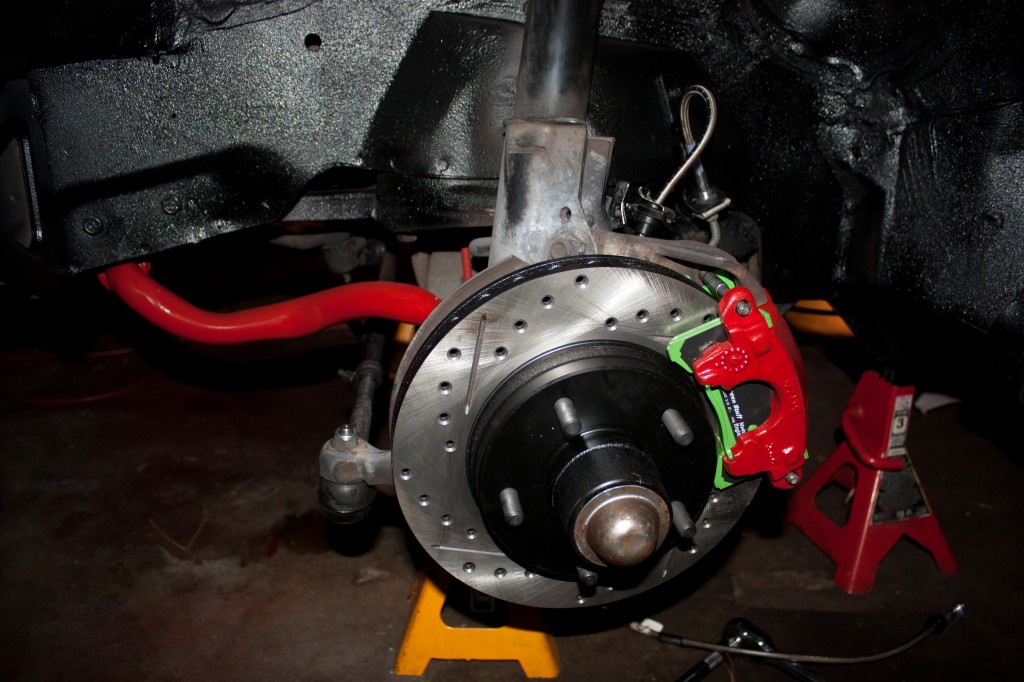 Your brakes are arguably the most important part of your vehicle because they regulate your speed and help prevent accidents. Anyone who has had brake trouble can tell you how important it is to address any problems as quickly as possible. If your car takes a long time to come to a complete stop, or if you hear grinding noises coming from your car when you brake, you might have broken or worn out brake pads and rotors.
Your brakes are arguably the most important part of your vehicle because they regulate your speed and help prevent accidents. Anyone who has had brake trouble can tell you how important it is to address any problems as quickly as possible. If your car takes a long time to come to a complete stop, or if you hear grinding noises coming from your car when you brake, you might have broken or worn out brake pads and rotors.
How do brake pads and rotors work?
When you apply the breaks in your vehicle, you begin a process that slows the momentum of your car. The two main components in this process are your:
- Break pads; and
- Disk break rotors
Different vehicles require different types of break pads and rotors, but they all serve the same function. As you break, your break pads clamp down on your spinning rotor. The kinetic energy is converted into thermal energy as your break pads clamp onto the rotors to bring the car to a stop. Your car is essentially turning forward momentum into heat.
By picturing this process in your head, you can understand why it’s better for you to come to a slow stop than to slam on your brakes. A slow, gradual stop will create less heat in your brake system. Similar to when we discussed proper tire inflation, systems wear out quicker when they operate at a higher temperature. If you’re constantly slamming on your brakes, you’re exposing them to intense thermal energy.
Types of rotors
There are a few different styles of rotors available for your vehicle. Although there are rotors specially designed for performance vehicles (like racecars) and heavy vehicles (like 18-wheelers or fire trucks), we’ll focus on the two main rotors that are used among typical drivers.
- Drilled rotors are probably the most common type of rotor on the road. A drilled rotor has small holes drilled into the side. These holes help regulate the thermal energy produced during braking, which keeps your rotors operating at a cooler temperature. Although they help get rid of excess heat, drilled rotors are weaker than other types of rotors because there are holes in the disc. Drilled rotors can crack after being exposed to long-term stress.
- Slotted rotors are the other main type of rotor used in passenger cars. A slotted rotor has small divots in the disk that help regulate temperature. Because the divots aren’t full blown holes, slotted rotors tend to be more durable than drilled rotors. That being said, slotted rotors tend to wear down your brake pads faster than their drilled counterparts, so most people opt for drilled rotors.
How often should you replace brake pads and rotors?
There are a lot of different answers out there for when you should replace your break pads and rotors. You should consult with your trusty auto mechanic when you’re having either replaced, as they can estimate how long certain pads and rotors will last. As a general rule, break pads should be replaced every 10,000-20,000 miles, while rotors should usually be replaced every 50,000-70,000 miles.
With that said, it is imperative to get your brakes checked the first time you hear grinding or crunching while braking. The noise usually mean your break pads are worn and need to be replaced. If you continue to drive with worn pads, your rotors can become damaged. By replacing your pads before they become too worn, you can actually extend the life of your rotors, which will save you money.
Related sources:Â PrimeChoiceAutoParts.com, HowStuffWorks.com


